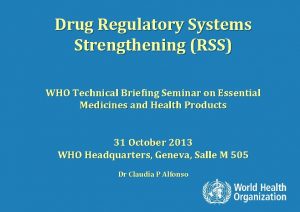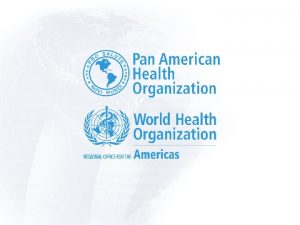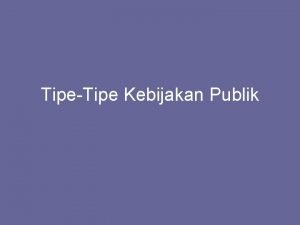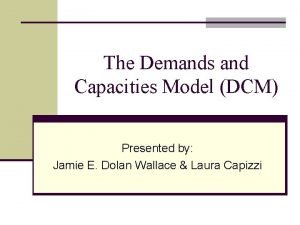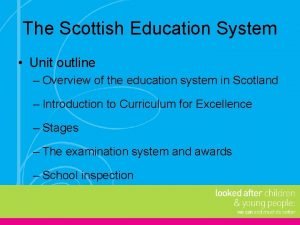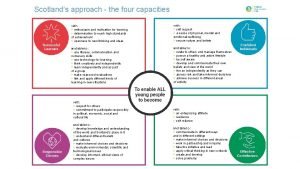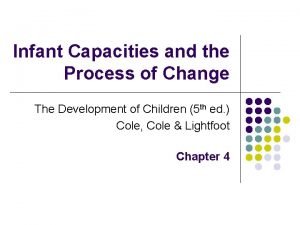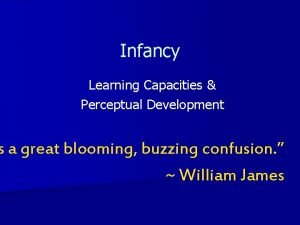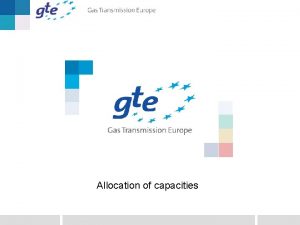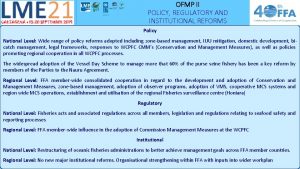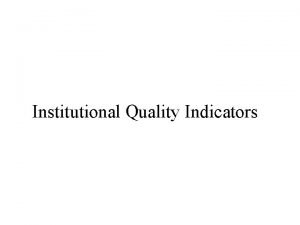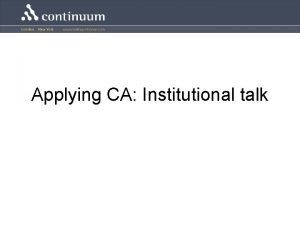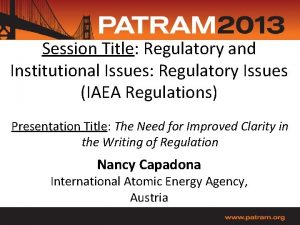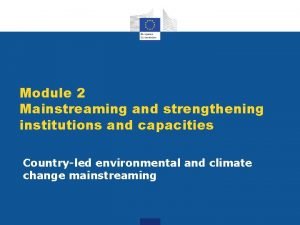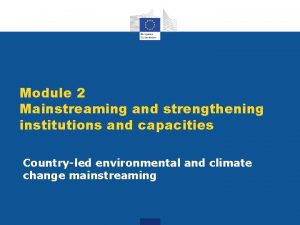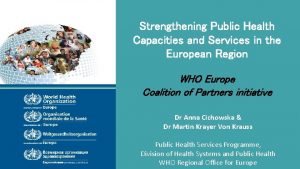Strengthening policy regulatory frameworks and institutional capacities for












- Slides: 12

Strengthening policy, regulatory frameworks and institutional capacities for Climate Resilient Infrastructure in Africa. SCF 2017, 6 -7 Septe mber, 2 2017 Dr. Timothy Afful-Koomson. Principal Green Growth Officer, African Development Bank

Outline Why is climate-resilient infrastructure in Africa critical ? e p How is climate resilient infrastructure consistent with the Af. DB’s strategic leaning ? p What are the Key Entry Points of Af. DB Engagements for Climate–Resilient infrastructure in Africa ? p What are Some Best Practices and Lessons Learnt? : p Ø Ø Ø i. Strengthening Policy for Climate Resilient Infrastructure in Africa; ii. Strenghtening Operations for Climate Resilient Infrastructure in Africa; iii. Strenghtening Institutional Capacity and Partnerships. What are some of the major “gains” and “pains” ? q What are the key messages and way forward ? q

Why is climate-resilient infrastructure in Africa critical ? ØThe Challenges: 1. Africa is relatively lagging behind in infrastructural development. 2. Highly vulnerable to climate change. ØThe need to transform the challenges into opportunities to build ‘right’. ØWill require integrating the continent’s extreme vulnerability to climate risks in for example the design, construction, operation and maintenance of infrastructures.

How is climate resilient infrastructure consistent with the Af. DB’s strategic leaning? Ø Ten Year Strategy (2013 – 2022) focus on enhancing climate resilience and sustainable infrastructure. Ø Hi-5 s (1. Light up and Power Africa, 2. Integrate Africa, 3. Industrialize Africa, 4. Feed Africa and 5. Improve the quality of life for Africans) - mainstreaming climate resilient measures in the relevant Bank policies, programs, projects and operational activities. Ø Green Bonds for climate-smart infrastructure projects Examples, 2015 USD 500 million and 2014 SEK 2 billion. Ø Committed to a US$5 billion/year investment target in climate change related initiatives by 2020.

What are the Key Entry Points of Af. DB Engagements for Climate –Resilient infrastructure in Africa? • Physical Assets • Risk Management Design, Construction, Maintenance Insurance, Operational risk, Ministry, Sector Units, Project Implementation Unit, Community • Institutional Sector, Project • Policy & Regulation

Some Best Practices and Lessons Learnt : i. Strengthening Policy for Climate Resilient Infrastructure in Africa-. Ø Policy Basis: The Af. DB is pursuing the second phase of the Climate Change Action Plan (2016 -2022). The first phase was from 2011 to 2015. Key Performance Indicators, Monitoring & Evaluation. Ø Opportunities and Entry Points: Country and Regional Programming. Country Strategy Papers (CSPs)/ Regional Strategy Papers (RISPs)- critical upstream instrument for engaging with Regional Member Countries. Ø Lessons Learned: 1. Mainstreaming Climate change issues in medium-term to long-term infrastructure development Plans of the RMCs- Infrastructure Pillars; 2. Costing and Investment Planning of INDC related infrastructure projects; 3. Investment Facilitation, Funding Coordination and Harmonization.

Some Best Practices and Lessons Learnt : ii. Strengthening Operations for Climate Resilient Infrastructure in Africa. Ø Operations: Climate Safeguard System (CSS) - facilitate upstream climate risks assessment and identification of strategies that help reduce vulnerability of infrastructure projects to climate risks. Ø Opportunities and Lessons Learned: Categorization Readiness Reviews Environment and Investment Facilitation – GEF, GCF, Adaptation Fund, Social Africa Assessment Water Facility (AWF), CLIMDEV Special Fund (CDSF)

Some Best Practices and Lessons Learnt : ii. Strengthening Institutional Capacity and Partnerships. Ø Expert Meetings. Ø Lessons Learned: (a) identifying knowledge and capacity gaps (b) taking stock of what is currently being done in the region for "climate-proofing" projects; and (c ) determining the opportunities, constraints and challenges for integrating climate risks in infrastructure development on the continent.

Some Best Practices and Lessons Learnt : iii. Strengthening Institutional Capacity and Partnerships. Ø Institutional Capacity needs Assessment and Training. Ø Lessons Learned: (a) addressing capacity gaps of engineers, developers, decision makers (b) Scaling up the capacity to mobilize adaptation finance at scale ( c) Coordination of project preparation grants (d) Institutional knowledge exchange and skills transfer.

What are the some of the major “gains” and “pains” ? “Pains” ‘”Gains” Ø Build “right” from scratch. p Incremental costs of climate Ø Safeguard investments from potential climate risks Ø Improving the scalability of adaptation finance in Africa Ø Opportunity for scaling up capacity -addressing vulnerability of infrastructure projects to climate risk p proofing the project – About 10% total costs. Sourcing concessional funding (including climate funds) to cover the incremental costs Projections –uncertaintyrisks, avoided expected costs and benefits Availability and Reliability of climate data and information

What are the key messages and way forward ? Ø Translate the challenge of infrastructure deficits on the continent into opportunity to build it right. Ø Climate-proofing infrastructure projects in Africa is critical to reducing infrastructure investment risks, climate-related health and fatalities, liabilities and financing of infrastructure. Also for scaling up adaptation finance. Ø Af. DB has taken the leadership initiative consistent with its TYS and has developed tools and procedures such as the CSS for climateproofing infrastructure projects; forged partnerships; enhanced institutional capacity and facilitated investments for climateresilient infrastructure in Africa. Ø Phase 2 of the Climate Resilient Infrastructure Initiative – East Africa, Central Africa and Northern Africa. Expected Support from the Africa Climate Change Fund (ACCF).

Thank You. Shukraan ﺷﻜﺮﺍ MERCI Asante Gracias
 Regulatory system strengthening
Regulatory system strengthening Regulatory system strengthening
Regulatory system strengthening Pengertian kebijakan protektif adalah ...
Pengertian kebijakan protektif adalah ... Demands and capacities model
Demands and capacities model Bronchial tree
Bronchial tree Cfe 4 capacities
Cfe 4 capacities The 4 capacities
The 4 capacities Capacities newborns display
Capacities newborns display Perceptual capacities
Perceptual capacities Caregiver protective capacities
Caregiver protective capacities Electron shell capacities
Electron shell capacities Units of heat
Units of heat Nursing theories and conceptual frameworks
Nursing theories and conceptual frameworks
